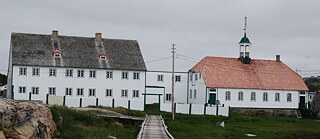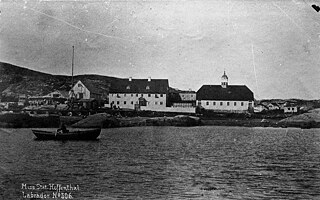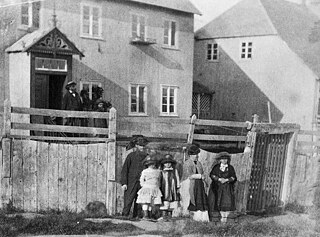German Traces in Newfoundland
German Missionaries in Newfoundland

During the 18th century, German missionaries have been active in many parts of the world. This includes Labrador, Canada. The first mission of the Protestant “Herrnhuter Brethren” was shattered in 1752 in Hopedale when angry Inuit destroyed the mission house. Due to the negative experiences with the often violent European traders and fishermen, the Inuit had been rather suspicious of the Herrnhuter.

In the center of the community was a mission house with living spaces and common areas, as well as a shop where German-style products of all sorts could be bought. Until today, some baroque style facades can still be seen. Parts for the mission houses and churches were shipped from Germany to Canada. Especially popular in the parish houses of the Herrnhuter were the German tiled stoves.

Against the advice of the missionaries, on August 25, 1880, eight Inuit from the Hebron and Nachvak region were recruited by Carl Hagenbeck, a German exotic-animal merchant who specialized in "ethnographic spectacles". They were embarked on the sailing ship “Eisbär” with dogs and kayaks. Weakened by disease, the Inuit experienced a tragic destiny in this human zoo. For one year they were led from Hamburg to Berlin across Germany and were supposed to imitate hunting scenes. They never saw their homeland again.
Source: “Bassler, Gerhard, “The Esquimaux … cannot be in better hands.” in: Bassler: Vikings to U-Boats: the German experience in Newfoundland and Labrador. McGill-Queen's Press-MQUP, 2014, 29-61)
Hopedale Mission Natural Historic Site
Government Rd
Hopedale, NL A0P 1G0